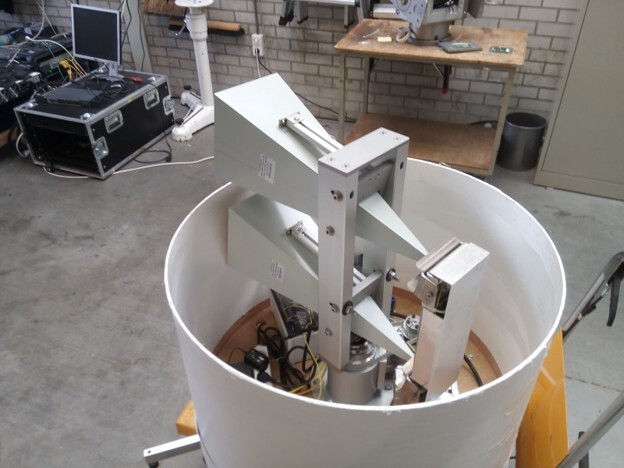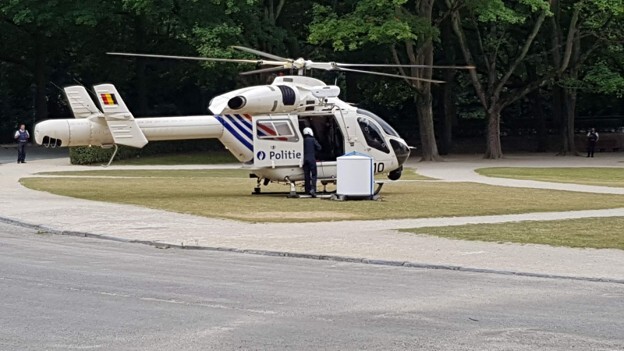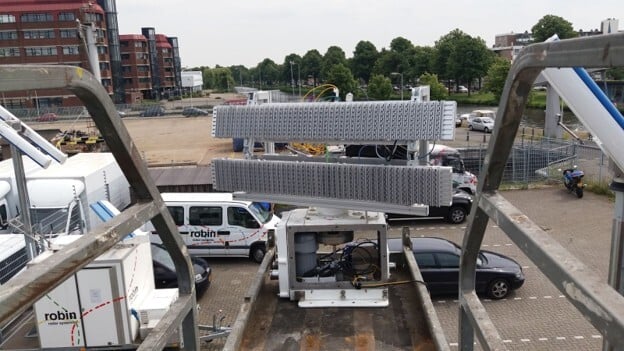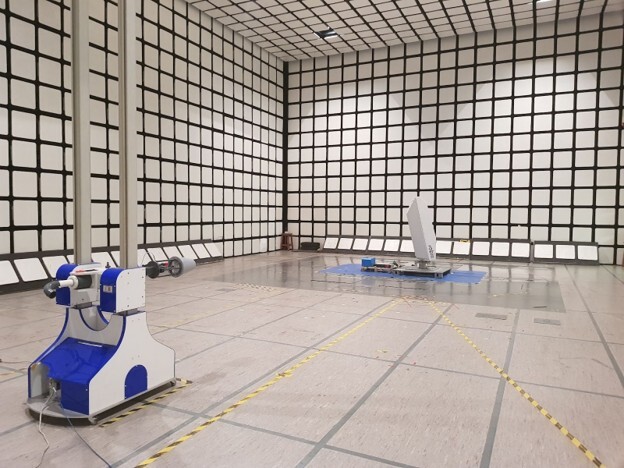40 Years of Radar Science
Contrary to common belief, the charming little bird that adorns Christmas cards isn’t what inspired our name.
ROBIN is an acronym that captures a colourful technical heritage: Radar Observation of Bird INtensity. Our radar systems may sit at the cutting edge today, but we have a far-reaching history that takes us all the way back to 1980.
It all began in aviation, with a bright idea to reduce the risk of birds striking planes. We didn’t know it then, but it would send us soaring into a global mission, empowering thousands along the way, to make skies safe.
Join us as we step back in time to revisit the rapid technical evolution of our products, from inception to the present day. Crank the dials, hit the oversized keys and buckle up, here’s what happens when technical innovation meets a vision ahead of its time.





It’s 1980. Perms are in and Pac-Man’s reign seems certain. Technology is booming, and the first notion of Robin Radar Systems is conceived.
Royal Netherlands Air Force (RNLAF) planes battle with the ongoing hazard of bird strikes, grounding assets and posing a severe safety risk to pilots.
The Dutch Research Institute for Applied Science, TNO, began a project to prevent strikes between birds and military planes. A small team of technical and visionary minds were assembled.
Ideas became innovations, and after multiple iterations of the military project, which showed huge promise, the team shifted sights to the civilian market. The European Space Agency (ESA) came aboard, contributing with its FlySafe Initiative, and the group got to work honing algorithms that processed raw images from air defence radars. These images were used to visualise bird intensity.
Our technologies advanced, and in 2010 our CEO, Siete Hamminga, saw our bright potential and decided it was time to share it with the world. He spun out the technology from TNO to make it commercially available, and Robin Radar Systems was born!
The rest, as they say, is history. But let us walk you through it.
It’s 2010, and with decades of experience behind us and a knack for developing sophisticated processing algorithms, we got to work building our first commercial radar.
We set out with aviation, civil, and military in mind, aiming for a 3D system to empower bird control teams with a greater awareness of their airspace. FIXED/FLEX would get us close.
We already have a prototype of the FLEX system, but there are snags. Cable constraints prevent it from continuous rotation, namely due to the electronics box, mounted between the antennas. We need a redesign, but that’ll take time.
“There were already customers waiting on systems, so we decided to speed up production by inventing FIXED,” explains Robin Radar System Specialist, Wouter Keijer. "Introducing FIXED bridged the gap between our market goals and a lengthy redesign. It formed an intermediate version of a 3D radar by combining the two different systems.
"FIXED is two pulse radars on static mounts, FLEX is one pulse radar and one FMCW on a rotating mount, giving 360° coverage. Effectively, a set of spinning sensors that delivered overlapping coverage.”
“FLEX needed some work, though. It could only complete one scan, then another in the reverse direction. It took some time before we landed on an engineering update that eventually got us over the line. This was the most challenging task.
"We also had to get the horizontal radar up and running, select the proper hardware for a commercial installation and develop a user interface and database for our customer.
“It was tough, but it laid much of the groundwork for all of our systems, which inherited and developed traits from FIXED and FLEX. Much of the software architecture and significant parts of the high-frequency electronics in the sensor are still recognisable today.”


In 2014, we began simultaneously innovating for another emerging threat, drones.
We see drone use advancing, and their availability and commercialisation are becoming an increasing risk. Our technologies hold the potential to help, so we head back to the drawing board.
We already know our radars can detect drones because we use them in continuous testing and validation cycles. But, can we build a radar that distinguishes them from birds, classifies them accurately and tracks their erratic flight? Only one way to find out!
We challenge ourselves to innovate ELVIRA, our 2D drone radar, fast. Really fast. Wouter said: “We wanted to get a robust and capable CUAS radar to market as soon as possible. That meant reusing a lot of the components from our avian radar, and COTS parts for the rest.
“We began with one of the main differentiating components of the radar, the Doppler signature. This is how ELVIRA can classify drones, with micro-doppler technology that distinguishes them from birds and other flying objects. It was the main challenge for us, as it was completely new.
“Our design principles centred around simplicity. We wanted to bring something capable and affordable, aiming for a rotating radar that achieved low power usage, and doppler capability, with our FMCW technology.”
By 2015, and thanks to the tireless efforts of our engineering teams, we were ready.
Amazingly, within a year of beginning the project, our specialised 2D radar landed in the defence and security market.
It’s 2013, and time for our next-generation avian radar. With it, we’re determined to revolutionise bird detection by combining 3D technologies with 360° awareness. We’d also build in logging and reporting tools to make data sing for bird control teams, wind farm operators and ecological experts alike.
Engineering teams focus on achieving a high update rate, a longer range, and more elevation coverage with a smaller cone of silence. Not to mention, the key ingredient of altitude measurement for full 3D awareness.
“That was tricky,” explains Wouter, “because the probability of a target's successful detection rests on the average amount of energy striking it, and for how long. A pulse radar emits a very high pulse of energy, but for a short time, which isn't ideal. But by now, we’d established our core FMCW technology, which stretches time spent on a target and reduces output power.
“We added phased array technology to achieve 3D, this involves an array of small antennas that steer beams electronically. They work together, sending and receiving radio waves simultaneously and in a carefully controlled and timed way.
“This combination makes MAX unique, to this day. The market is mostly comprised of static panel radars with phased array technology. That makes them expensive, and achieving 360° coverage takes more than one. In MAX, and later, IRIS, we took a fresh approach by merging the idea of traditional rotating radar, for 360° coverage, with phased array technology in one direction, for altitude (full 3D). This reduces component costs and keeps the radar more affordable.
“Because we didn’t compromise on these initial design principles, we had to do a lot of troubleshooting and alternative thinking. We began with the antenna design, a modular system with highly integrated electronics. It was a lot of work, but resulted in a highly innovative patent that connected the electronics boards to the antenna.
“We also gave careful consideration to MAX’s data processing. 48 channels of 15 MHz raw data feed into the processing module, so we needed high-speed signal processing on a big Field Programmable Gate Array (FPGA). That was a real challenge.”
In 2017, years of hard work paid off, and we unveiled MAX to the world. Today, it sits in a market-leading position, offering 3D, 360° coverage, a lightning-fast scan speed of just 1 second, an instrumented range of 15 km, and an extensive database and logging tools.

-1.jpg?width=1839&height=2754&name=RRS%20IRIS%20OTM-2%20(1)-1.jpg)
Fast forward three years to 2018. Robin is still the same innovative technology company revolutionising radar, but the world is changing. In December of that year, the impact of drone disruption was immortalised in an incident that grounded over 1,000 flights at Gatwick Airport in the UK.
Approximately 140,000 passengers were affected as operations halted following reports of a drone sighting. This incident cost the aviation industry an estimated £70 million, underscoring the need for stricter regulations and counter-drone technologies.
Thankfully, we’ve already got to work innovating our next CUAS radar, IRIS. This one would be small, deployable; a radar that doesn't compromise in any aspect of deployment, detection or classification.
Wouter explains: “We aimed for an update rate equal to or better than that of ELVIRA. We also wanted more elevation coverage and a smaller cone of silence. The largest differentiator between ELVIRA and IRIS would be the fact that this was a 3D radar, rather than 2D, meaning it could provide accurate altitude as well as 360° coverage.
“Although its form and function were different, we saw IRIS almost like a mini-MAX. Both are 3D radars using phased array technology, one innovated for birds, the other drones. So, we began by checking which parts we could reuse.
“Unlike MAX, though, IRIS also needed doppler capability. That made things a little more complex.”
For the radar to classify a target with Doppler, it needs to spend time on it to analyse and process it. However, the longer the radar spends on a target, the longer the track update rate, which degrades real-time detection.
Wouter said: “We didn’t want to compromise our one-second update rate, but the solution came in the form of our unique back-to-back antenna concept. That increases the update rate without losing doppler capability.
“In the wake of our success with FMCW technology, we once again applied it in IRIS. We also introduced a phased array technology for the altitude measurement, just like MAX.
“In IRIS, we wanted to bring all of these capabilities together in a small, lightweight design. That was difficult, we had to go through a lot of iterations to balance the signal generator with the Doppler signature, the digital beam with the processing computer, and the list goes on.
“We also had to factor in military specifications on temperature, shock and vibration, and electromagnetic emissions. That’s difficult when working with a highly restricted size and weight design. But we knew that’s what the market needed.”
It was a balancing act that took two years of careful give and take. We launched IRIS in 2020; the drone radar that didn’t compromise.
Here at Robin, we’re pretty proud of our heritage, and prouder still of our legacy of innovation. We write it into everything we do.
Meticulous patenting keeps our products and services at the cutting edge, with 30+ patents registered, and counting. That’s because we know the success of our customers, their operations, mission and projects, rests upon precision and accuracy. So we never stop pushing.
As we speak, our expert teams are figuring out the nuts and bolts of even better performance. They do it every day — testing, trialling, triumphing — so our customers and partners benefit from every technological advancement we make.
From advanced signal processing to machine learning updates, even contributing to the world’s most advanced weather radar, our systems are evolving. That’s how Robin keeps customers a step ahead in an equally fast and changing world.